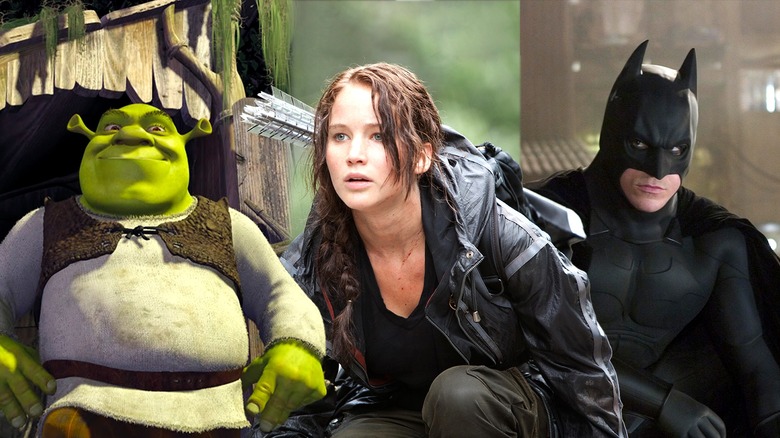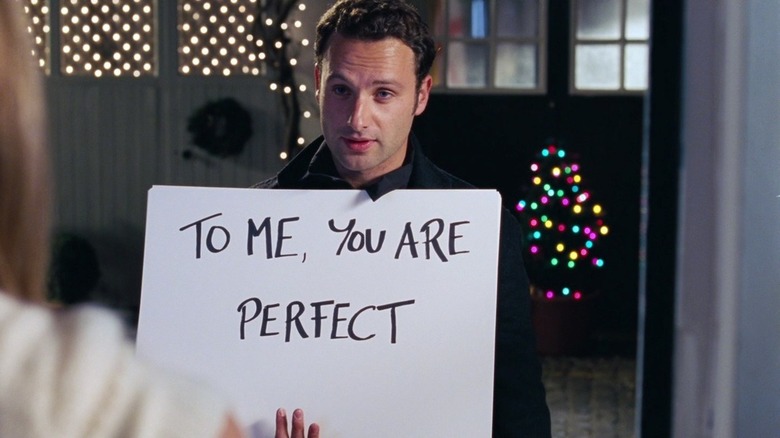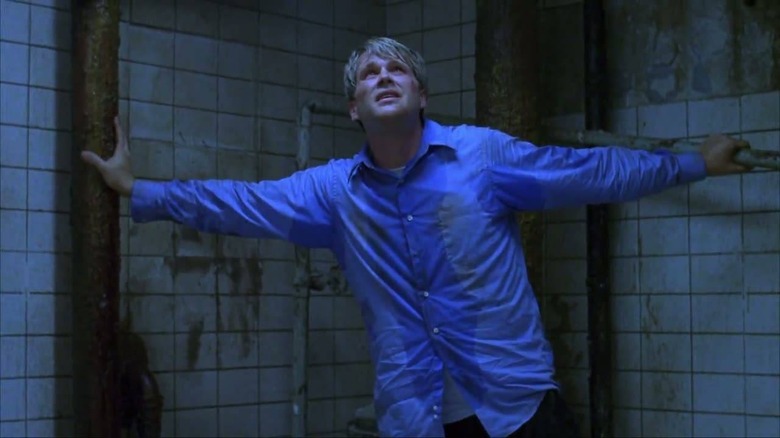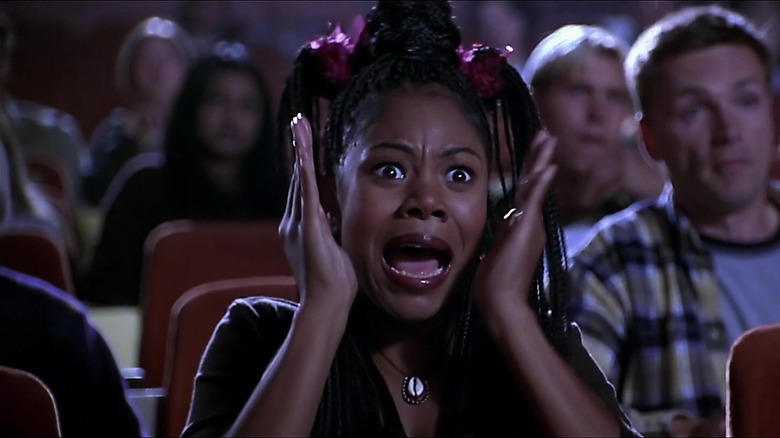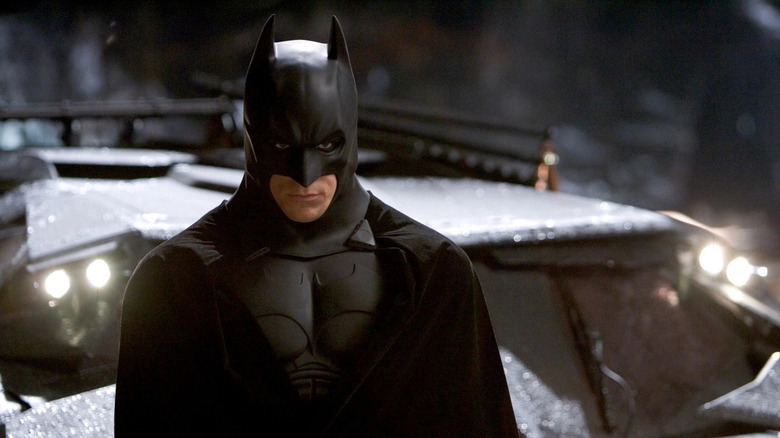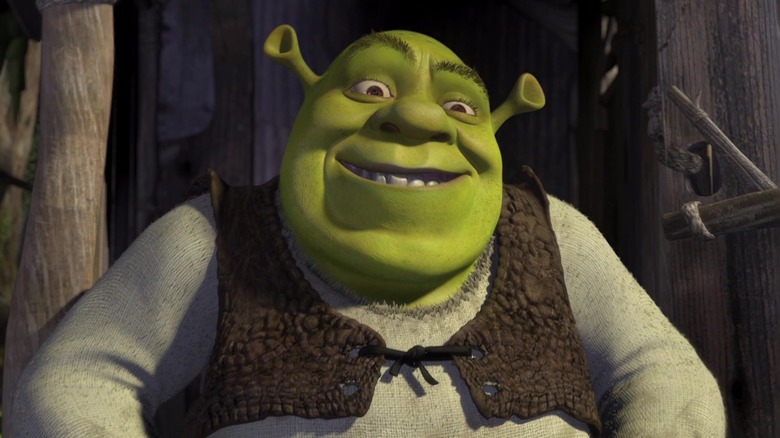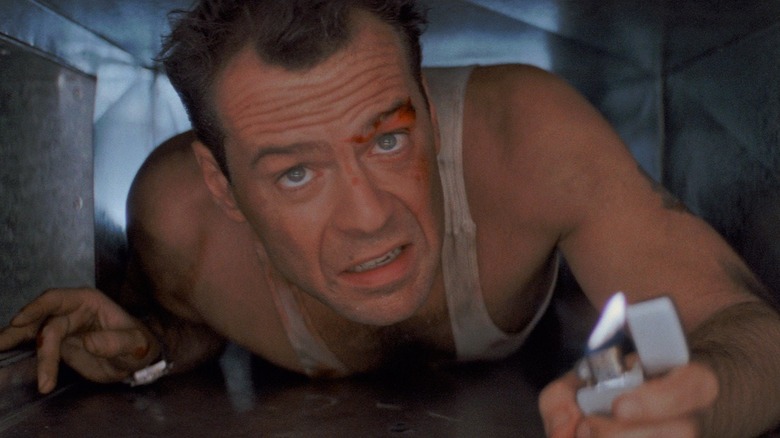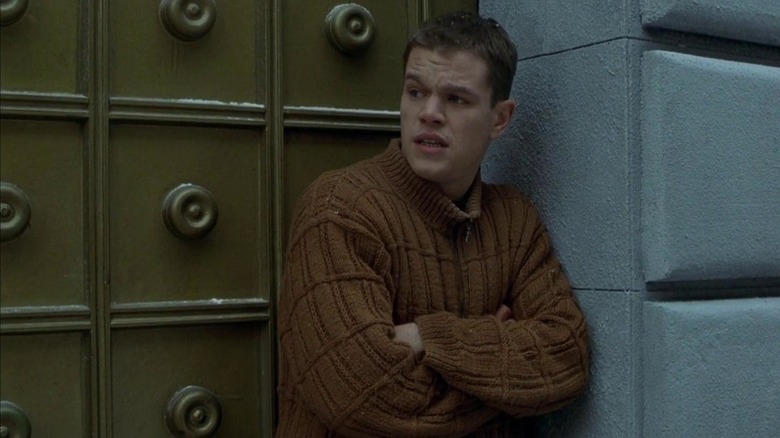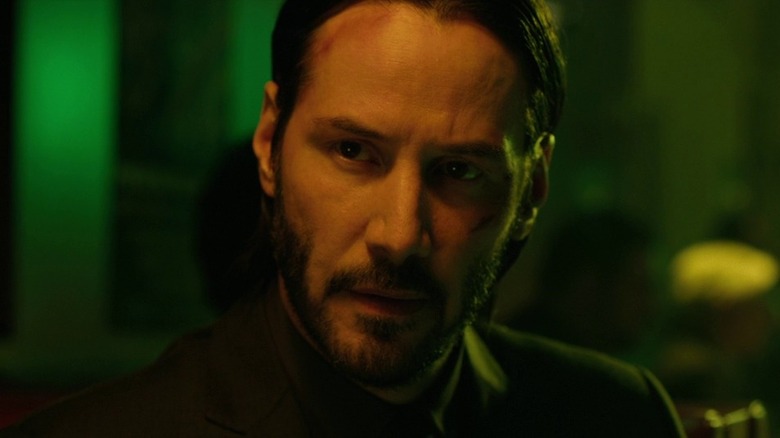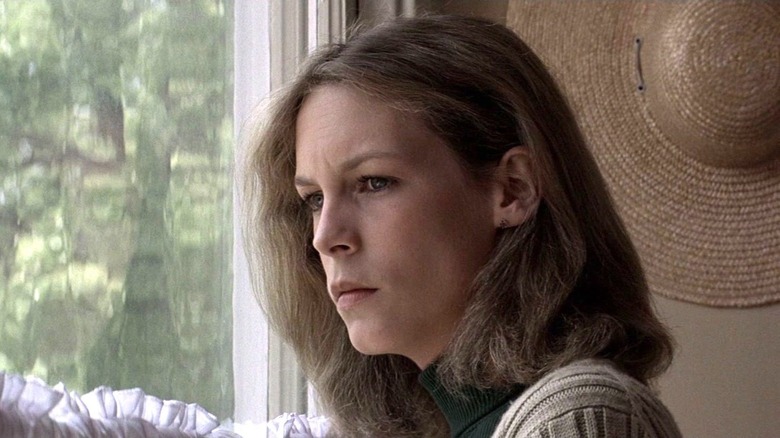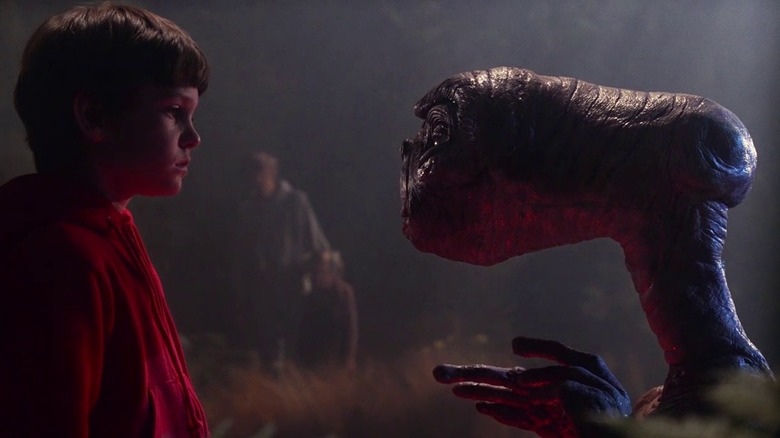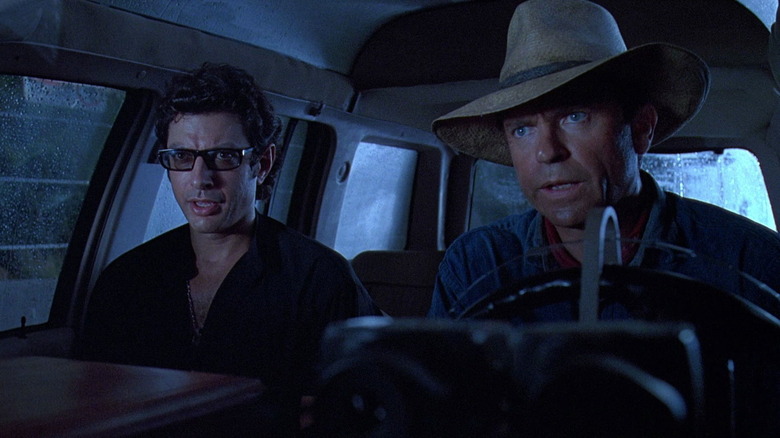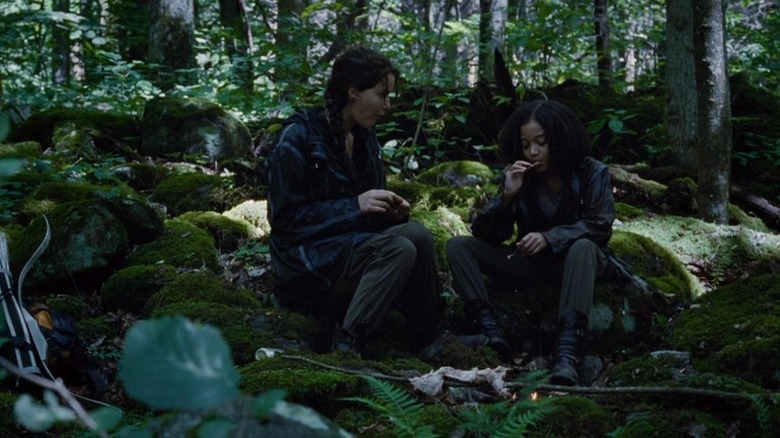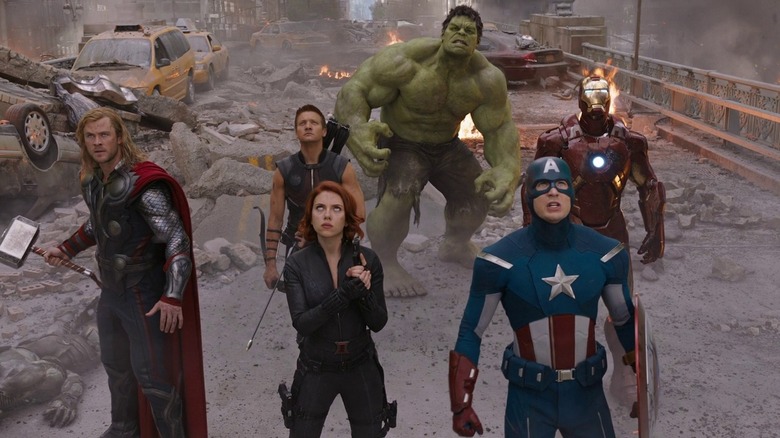13 Films So Good That They Inspired Dozens Of Imitators
"Imitation is the sincerest form of flattery," as they say, and if that's true, then Hollywood just loves to flatter the biggest movies in the world. If something proves lucrative at the box office, then it won't be long before hordes of other copycat movies swoop in to try and replicate that success. This trend is not contained to just one genre, it impacts everything from comedies to animated movies to big superhero blockbusters and everything in between. Wherever there's money to be made, the film industry will be there to crank out quick cash grabs that sometimes succeed but often miss the point of what made those pop culture phenomena so special in the first place.
The most notable examples of movies that spawned so many pastiches are an eclectic bunch of features. You've got everything from a romantic comedy crammed with celebrities to a unique take on Batman, just to name a few. If you were to watch these original box office smashes back-to-back, you'd be hard-pressed to find any distinctive overlapping similarities. However, in their broader existence as pop culture entities, all of these influential films are united in casting a big enough shadow over pop culture to incur the creation of countless imitators. Join us as we take a look at some of the best.
Love Actually
In North America, "Love Actually" made a solid sum of money, though it wasn't the biggest feature of 2003, and its $59.4 million gross in this territory put it behind titles like "Kangaroo Jack" and "Mona Lisa Smile" at the box office for 2003. However, "Love Actually" made a staggering $187 million overseas — a haul that ensured this holiday-themed romantic comedy would become a hugely profitable exercise. As a cherry on top, its distinctive plot structure and expansive ensemble cast helped to keep the movie in people's minds long after its theatrical run ended. It also provided a template that future romantic comedies would mimic in the years that followed.
In 2006, "The Holiday" — though featuring a considerably smaller cast — also chronicled wildly varying lives navigating romantic turmoil during the holiday season. Meanwhile, director Garry Marshall would most explicitly mimic the "Love Actually" formula with titles like "Valentine's Day" and "New Year's Eve," which crammed as many famous faces as possible into holiday-themed shenanigans. These projects eagerly attempted to mimic the "Love Actually" formula, and even the original film's writer and director has gotten in on the act. According to Variety, Richard Curtis has penned the screenplay for an upcoming animated movie entitled "That Christmas," which is intended to function as a family-friendly variation on the "Love Actually" concept. Decades later, "Love Actually" is still influencing so much of pop culture and it doesn't show any signs of stopping.
Saw
Horror movies have traditionally been a type of genre storytelling that Hollywood can make on the cheap. That means when one entry in this genre hits it big at the box office, it won't cost an arm and a leg to mimic its success. So it was with "Saw," an independent horror feature that debuted in theaters in October 2004. The presence of grisly torture traps — albeit most of it off-screen in this installment — and a smart Halloween release date turned "Saw" into a box office smash. The filmmakers would respond to all that loot by making an endless string of "Saw" sequels in the years that followed, but attempts to capitalize on the popularity of "Saw" would also be reinforced through a slew of torture horror movie knock-offs.
Whether it was "Hostel," "The Collector," or "Captivity," movies that really lingered on people in enormous pain being dismembered in creative ways were the new norm in horror cinema. Even if they didn't feature Billy the puppet riding around on a tricycle, these films owed their very existence to "Saw" and its incredible success. The sheer ubiquity of these movies — with the "Saw" franchise alone producing seven installments over six years – ensured that torture horror didn't have a long reign at the top of the horror movie food chain. Still, for a moment, "Saw" mimics were big business in movie theaters.
Scary Movie
The parody movie existed long before "Scary Movie" hit theaters in 2000, but this skewering of "Scream" and other then-recent horror movies certainly took the genre to new heights of popularity. The second-highest-grossing spoof movie domestically at the time of its release, "Scary Movie" was bound to inspire not just sequels, but a swarm of knock-offs. Part of the ubiquity of these movies in the years following "Scary Movie" was that it was simply a style of movie that was easy to sell to Hollywood executives. "Scary Movie" screenwriters Aaron Seltzer and Jason Friedberg explained to Grantland that, after "Scary Movie" was a hit, the duo wrote several non-spoof movies around Hollywood that never got made. When these two got behind the parody film "Date Movie," on the other hand, they were able to get financing and see something they wrote end up on the silver screen again.
That kind of ease of securing financing ensured that the spoof movie would be rampant throughout the 2000s, with many of them featuring the word "movie" in their titles to evoke thoughts of the spooky trailblazer. Seltzer and Friedberg delivered movies like "Meet the Spartans" and "Disaster Movie" while other spiritual successors included "Extreme Movie." After a decade of these often-despised productions, the spoof movie garnered a terrible reputation with moviegoers and critics alike. Though its pop culture influence eventually faded away, "Scary Movie" still had a massive impact on cinema — for better and for worse.
Batman Begins
In the pantheon of "Batman" films, "Batman Begins" was not the biggest movie of all time. It marked a serious financial rebound for the franchise after "Batman & Robin" nearly sank the saga for good, but its domestic total was only $21 million ahead of what "Batman Forever" grossed a decade earlier. Though it wasn't as massive at the box office as its two sequels, "Batman Begins" became one of the most influential movies of the 2000s. With this feature, Hollywood suddenly saw a blueprint for how to revitalize seemingly-dormant franchises. Throw some grim 'n' gritty aesthetics on top of a recognizable character and you had a winning formula for getting your franchise back on track.
In the years that followed "Batman Begins," plenty of reboots and other blockbuster films mimicked its tone and style. Producer Brian Rogers explicitly name-dropped "Batman Begins" as a model Legendary Pictures was adhering to when rebooting "Godzilla," while screenwriter Paul Haggis revealed back in 2005 that "Batman Begins" was inspiring the direction for "Casino Royale" — another gritty refresh of a beloved pop culture icon. It even influenced rival comic book movies, with Edward Norton telling Total Film in 2019 that his original vision for "The Incredible Hulk" was in the mold of "Batman Begins." While it didn't annihilate box office records when it first opened, "Batman Begins" proved a success in the long run given how many copycats it produced.
Shrek
As moviegoers walked out of the theater to the tune of Smash Mouth's cover of "All Star" during opening weekend screenings of "Shrek," none of them could have predicted just how widely influential this movie would become. Much like the animated Disney musicals of the early '90s, "Shrek" became so lucrative that every other animation studio on the planet wanted to mimic its success. The highly-influential nature of "Shrek" was benefited by how computer-animation filmmaking was still in its nascence when this DreamWorks Animation title debuted in 2001. People wanted some guidance on where this art form should go and "Shrek" provided it.
For more than a decade after "Shrek" was released, computer-animated comedies that took a satirical look at classic fairy tales dominated movie theaters. "Hoodwinked!" and "Happily N'ever After" were just two examples of this trend, while even the 2005 Disney release "Chicken Little" had shades of "Shrek" in the way it embraced pop culture references and bathroom gags. Meanwhile, an early version of "Tangled" entitled "Rapunzel Unbraided" evoked the irreverent comic tone of "Shrek," before Disney decided to revert to what they do best. For years and years, the world of animated family movies belonged to "Shrek" and everybody else was just living in it.
Die Hard
"Die Hard" isn't just a great movie, but one that thrives because of its simple concept: A New York City cop gets caught in the wrong place at the wrong time and must save the day. The underdog nature of the story and its confinement to largely one setting ingrained innate and compelling stakes into "Die Hard." These narrative details were so interesting and integral to the movie's success that derivative features were inevitable. The phrase "Die Hard in a..." became its own subgenre in the years that followed the debut of "Die Hard," with a stream of movies coming up with creative ways to cram action-packed narratives into a limited number of locations.
Many of these subsequent imitators — which included '90s action movie classics like "Under Siege" and "Air Force One" — didn't even try to hide the fact that they were cribbing their narratives from "Die Hard." For instance, Roland Emmerich — director of the 2013 feature "White House Down" — openly acknowledged to Collider that not only was his movie inspired by "Die Hard" but that a tank top worn by leading man Channing Tatum at the start of the movie was a homage to Bruce Willis' attire in "Die Hard." What made "Die Hard" so special was that it felt like a once-in-a-lifetime adventure for its protagonist — which makes it ironic that its narrative has been run into the ground for decades by other movies and subsequent sequels.
The Bourne Identity
Arguably the greatest lasting legacy of "The Bourne Identity" and its sequels was the way these movies filmed their action sequences. Hand-to-hand combat scenes were captured through handheld camerawork that was often incredibly shaky. A style established by director Doug Liman that would be carried on by filmmaker Paul Greengrass, this method of filming is meant to accentuate a sense of intensity and danger to the various skirmishes Jason Bourne engages in. While initially very unique to the "Bourne" movies, it wasn't long before other spy films mimicked this approach. Most notably, "Casino Royale" leaned heavily on the fight choreography and general style of the original "Bourne" movies.
The similarities were so apparent that "The Bourne Identity" director Doug Liman noted to Slashfilm in 2021 that he not only noticed how similar "Casino Royale" was to his "Bourne" installment, but that he had incredibly complicated feelings about those similarities. It wasn't just 007 getting in on the game, though as titles like "Hitman" and "Colombiana" featured fight scenes evocative of "The Bourne Identity." In an interview with We Got This Covered, "Colombiana" director Oliver Megaton acknowledged that the similarities between the two were because they shared a stunt coordinator. If you wanted to make a spy movie in the 2000s, you were bound to make it in the mold of "The Bourne Identity" and its sequels.
Static Media owns and operates Slashfilm and Looper.
John Wick
While "The Bourne Identity" inspired a wave of action movies that captured fistfights without a tripod in sight, the debut of "John Wick" in 2014 created a vastly different generation of action features. "John Wick" featured a barrage of crisply-filmed fight scenes — often coated in bright neon lighting — that astonished moviegoers. Inevitably, this approach would be carried over to the "John Wick" sequels and countless other action movies in the following years. What helped this one's influence become so pronounced was that its two directors, Chad Stahelski and especially David Leitch, went on to work on several other major action movies after "John Wick." Leitch, for instance, directed "Atomic Blonde," which leading lady Charlize Theron openly said to The Hollywood Reporter was dramatically informed by "John Wick."
Meanwhile, "Nobody" director Ilya Naishuller admitted to Inverse that the very existence of his Bob Odenkirk action movie (which was produced by Leitch) was because of "John Wick." However, the influence of this Keanu Reeves star vehicle goes far beyond the world of action films connected to Leitch. Director Sam Hargrave explained to Comingsoon.net that the filming style of "John Wick" influenced his approach to the various fight sequences of his 2020 film "Extraction." There's certainly no shortage of modern action movies imitating the slick action sequences of "John Wick."
Halloween
"Halloween" was a game-changer for the world of scary cinema and one of several low-budget horror movies that took the cinematic landscape by storm in the '70s. A seemingly simple story about a masked psychopath stalking people on Halloween night created a new mold for slasher movies that endures to this very day. The original "Halloween" cost just $325,000 to make, yet it scored over $70 million worldwide. With that kind of profitability, Hollywood wouldn't waste any time trying to mimic its enormous success, and there's no greater example of how "Halloween" became a go-to movie to mimic than another iconic entry in the horror movie canon: "Friday the 13th."
That film's screenwriter, Victor Miller, revealed to FridayThe13thFilms in 2007 that the entire concept for "Friday the 13th" came from a desire to emulate "Halloween" and its mammoth box office haul. This meant mimicking key elements of John Carpenter's movie, including coming up with a location where the teenage protagonists couldn't easily reach the aid of adults, while the pre-movie backstory of Jason Voorhees drowning was meant to mirror the dramatic events involving Michael Myers before the events of "Halloween." The fact that a movie so blatantly derivative of "Halloween" managed to spawn its own imitators has only solidified the influential nature of "Halloween," which keeps carving up new mimics even in the modern cinematic world.
E.T. the Extra-Terrestrial
In retrospect, it's quite astonishing that "E.T. the Extra-Terrestrial" was as massive in pop culture as it was. While director Steven Spielberg's name meant a lot by 1982 — thanks to hits like "Jaws" or "Close Encounters of the Third Kind" — "E.T. the Extra-Terrestrial" was still heading into theaters with no pre-existing brand or famous actors to its name. It was an original concept beautifully told and it resonated with audiences because of its willingness to do something new and exciting. It's quite a moving notion to see something like "E.T." succeed as it did, with the only caveat being that it didn't exactly inspire much creativity after its box office run. Rather than taking a cue from the willingness to explore new stories, an avalanche of derivative movies attempted to make this cinematic lightning-in-a-bottle happen twice simply by combining a plucky alien with a small child.
An especially egregious example of this was the 1988 movie "Mac and Me." Producer R.J. Louis explained to Thrillist that the film's titular lead alien, Mac, was designed to be an E.T. that a whole new crop of kids could adore. The poorly-made film and its ham-fisted McDonald's product placement became a punchline, today only remembered because of Paul Rudd's recurring use of a "Mac and Me" clip on Conan O'Brien's various talk shows. Other infamous "E.T." wannabes like "Nukie" just further proved that everyone took the worst possible lessons from the success of "E.T. the Extra-Terrestrial."
Jurassic Park
Speaking of Steven Spielberg movies, "Jurassic Park" was another summertime box office hit for the master filmmaker. The success of "Jurassic Park" had all kinds of ripple effects throughout the film industry — including the way it redefined the possibilities of what visual effects were capable of. Unfortunately, it also doomed pop culture to a horde of subpar copycats all desperate to be the next "Jurassic Park." One of the most notable mimics of "Jurassic Park" actually came out one week before this Steven Spielberg movie. "Carnosaur," a dinosaur horror movie from producer Roger Corman, was commissioned to ride the inevitable wave of hype that "Jurassic Park" would produce. However, Corman reaffirmed to The A.V. Club in 1999 that the films shoot schedule and post-production were hastened to make sure "Carnosaur" could come out one week before "Jurassic Park." Spielberg's dinosaur blockbuster proved so imitable that it was spawning mimics before it even came out.
The influence of "Jurassic Park" was felt throughout the world of B-movies, but it even infiltrated mega-franchises. Most notably, the 1998 American remake of "Godzilla," featured a version of the titular lizard that looked a lot like the T-Rex from "Jurassic Park" while its offspring had more than a passing resemblance to those vicious velociraptors. Everywhere you looked in the '90s, "Jurassic Park" knock-offs were there, all from people who were — to quote Ian Malcolm — "so preoccupied with whether or not they could, they didn't stop to think if they should."
The Hunger Games
The first "Hunger Games" movie made a staggering $677.9 million on an $80 million budget. With that kind of incredible profitability, there was no way it would remain untouched by those looking to make a quick buck in Hollywood. Film adaptations of young-adult novels about dystopian societies were now the name of the game for mainstream entertainment. Two years after "The Hunger Games," "The Maze Runner" – which was also about teens navigating a post-apocalyptic world — was released. "Maze Runner" director Wes Ball noted to Den of Geek that though the film wasn't intentionally meant to be a rip-off of "The Hunger Games," he welcomed comparisons to that earlier feature and hoped his movie would score off its precursor's box office glory.
Ball's attitude reflected how there was just no getting around the way these titles evoked the world of "The Hunger Games." This trend also encompassed the likes of "The 5th Wave" and even adaptations of novels that came out well before the original "Hunger Games" books. Most notably, Jeff Bridges and the creative team behind the 2014 adaptation of "The Giver" openly admitted to National News that the success of "The Hunger Games" — which covered similar thematic territory to "The Giver" — allowed this classic novel to finally come to the big screen. Once those box office receipts came in, it was only a matter of time before "The Hunger Games" inspired a slew of similar movies.
The Avengers
Most movies that make big bucks in Hollywood get impersonators, but "The Avengers" wasn't just another box office hit. It was a game-changer that proved that interconnected blockbuster narratives weren't going to alienate mainstream moviegoers. A whole new domain of possibilities had just opened up for those making new franchise films and especially further entries in the superhero cinema space. Just six months after "Avengers" hit theaters, Teenage Mutant Ninja Turtles co-creator Kevin Eastman revealed to NBC5 Chicago that "The Avengers" was being used as a key point of creative inspiration for the then-upcoming 2014 "Teenage Mutant Ninja Turtles" movie.
Those heroes in a half-shell were just the beginning of "The Avengers" molding the pop culture world, with further cinematic universes like the MonsterVerse, Dark Universe, and DC Extended Universe all launched after this feature's debut to varying levels of success. The influence of "The Avengers" has continued for over a decade after the original movie's release. In August 2022, Warner Bros. Discovery CEO David Zaslav name-checked "The Avengers" and other Marvel Cinematic Universe movies as guiding stars for his new vision for what movie adaptations of DC Comics characters could look like. The ongoing and wide-ranging impact of "The Avengers" on big-budget filmmaking is a testament to just how much of a revelation this 2012 movie was when it was first released.
